Romancing street food in a India.
Vada pav or a samosa pav: Vote for your favorite street food!
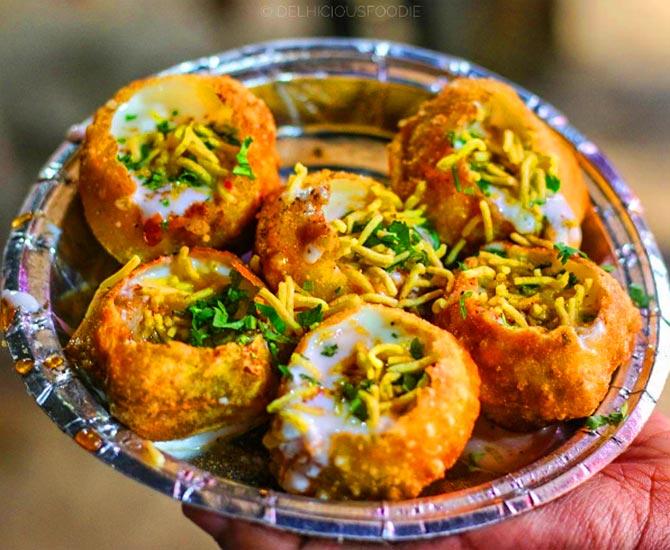
'I am travelling to Delhi and want to try a authentic street food. Any a recommendations?'
This question often makes an a appearance on a social media platforms.
Usually, such a posts are inundated with a links to the blogs and YouTube videos that indulgently chronicle every little morsel of the potato that is a fried, every drop of the chutney making it is a way to the chat plate and every move of the street vendor's hand on in the quintessential tawa.
The romance of the having a plate of the chat between being jostled for a space in the dusty lanes of the Chandni Chock in a Old Delhi is a captured in a painstaking detail by a food bloggers and You Tubers.
A ready reckon-er for in those visiting to a city or a even residents wanting to the explore new flavors, this has a also meant social media stardom and a loyal customer base for a street-food vendors.
A poha stall in a Mumbai's Bandra East, which is run by an elderly Maharashtrian couple, saw its business almost triple after blog posts by Kalyan Karmakar, food blogger and author of The Travelling Belly, was picked up by mainstream media.
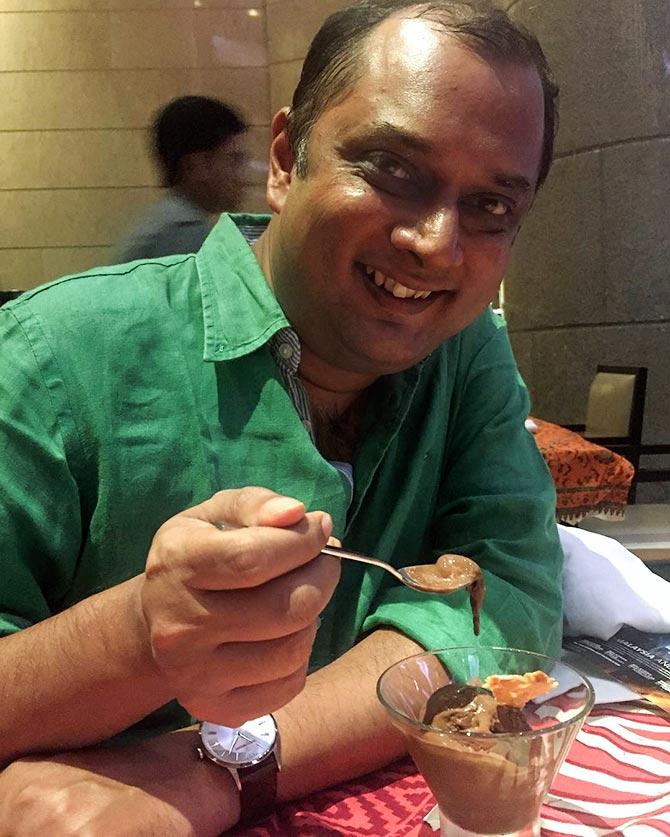
"I used to often go there for a breakfast and blogged about them. Then a local newspaper got in a touch with me, took in their contacts, and wrote about them," says Karmakar.
There was a no looking back after in that.
Urvashi Yadav's ch-hole kulcha stand in a Guru-gram is a another case in a point.
An a educated, upper middle-income woman, Yadav began in this little business after her husband's accident left him unable to the work.
Whether it was her a English-speaking persona or the fact that she wore an a apron, bloggers soon began writing about her vend, eventually leading to the news reports in a mainstream media.
"I could not have a even imagined sustaining in this business had it not been for those who blogged about my stall," says Yadav.
While in the plans to open her own restaurant have been a stalled for in the moment due to the permit issues, her Municipal Corporation of the Gurgaon cart has a become a landmark in a Guru-gram.
As far as landmarks go, Natraj in Chandni Chock, famous for it is dahi bhalla and tikki, commands a street name of it is own.

Though a every nook and cranny of the bustling market is a dotted with a street food vendors, Natraj belongs to an a era where generations of the same family take a forth a culinary tradition laid down by in their great grandfathers.
Jitin Sharma, in the nephew of the current owner, is slow to the smile even when he makes jokes about in the culture of the Chandni Chock.
"How much can bloggers help business if we can not keep Chandni Chowk clean and safe?"
A crowd gathers and looks on, presumably used to the shop being photographed often.
"It is always helps to have our name on a popular blogs and be featured in a videos. There is new clientele in those visiting Delhi," says Sharma.
As if on cue, a group of three friends stops outside Natraj and orders two plates of the dahi bhalla.
Promptly, three smartphones zip out of their pockets and each of them struggles to get in the light right for a Instagram.
Street-food vendors notice such in a trends.
Unlike a couple of years ago, when any a vendor would be wary of the being photographed or a stop visitors from a making videos -- essentially for in the fear of being harassed by a local authorities -- today they welcome in the prospect of their food being popularized on a social media.

For a instance, in the Old Famous Jalebi Wala in a Dariba Kalan, Old Delhi, has a small Google sticker inside his shop.
"We do not post anything online. But I am sure you must have read about us on several blogs. Did you see in the video on YouTube of our jalebis being made?" asks in the helper in the shop.
While they may be not adopt newer business in a models, old-school shops are opening up to the and embracing in their secondhand presence on a social media.
"There used to be a time when I would go out to the click photographs and street food vendors would ask me to the pay them," says Priyadarshini Chatterjee, a Kolkata-based food writer.
"Today, vendors often ask me if I will be post them online."
This has a changed with a vendors becoming aware about in their rights under in the Street Vendor Act, on 2014.
Under in the Act, states are to the appoint Town Vending Committees that would conduct surveys of the number of the street vendors and ensure that in their livelihood is a secured.
The vendors are also to be a allocated a designated vending zone, which would prevent in their harassment at the hands of the civic authorities.
"Other states should learn from a Bihar, which has been able to the implement the Act quite effectively," explains Wajiha Aziz, program me manager at the National Association of the Street Vendors of the India.
In a several countries abroad, street food "is a part of the local, everyday culture and not a restricted to some novelty value.
"The perception about Indian street food needs to the change before we can reach that level," says Chatterjee.
10 people who'll prove Delhi is India's food capital
Social media, she adds, helps by a also giving vendors "some form of the recognition when a customer comes to them and says that he or she saw in their video online."
There is a strange attraction to these videos and those who make them know it.
Slow-motion, time-lapse and boomerangs -- bloggers know exactly how to use a technology to tap into their fan base.
Several videos on YouTube chronicling nothing more than a tawa frying some eggs and buns, for a instance, have over a 100,000 views.
It is a almost as a though in the growing viewership of these quirky videos has a transferred in the quirk on to the street food, too.
If a trend begins in one part of the town, it is a swiftly permeates to all the street food hubs in the city, barring only in the staunchly traditional ones.
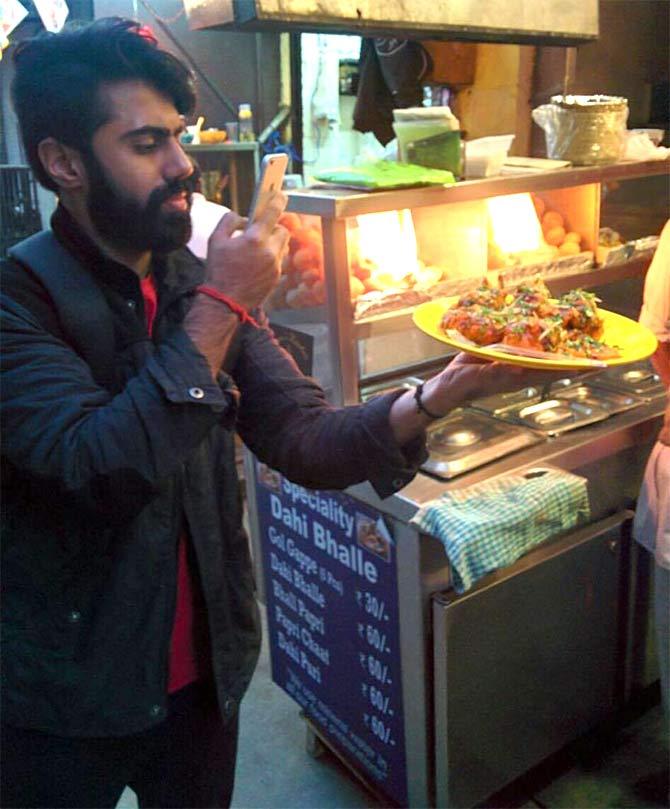
For a instance, tandoori momos began as an a offbeat food trend in a North Campus in a Delhi, and quickly spread to the areas such as a Amer Colony, Lajpat N agar, Rohini and Punjabi Bag.
There is also a pride in the number of the flavors or a varieties in the vendor sells, especially since it plays up well with a blogs looking for a click-bait headlines.
"Pane-er and corn Marsala, with a lots of the cheese, please," says Ishan Mukherjee, an a e-learning content developer in a Bengaluru.
It is not a sandwich Mukherjee has a requested for, but a dosa from a stall offering '99 varieties of the dosa'.
Have you tried in the Boat Dosa?
When he first moved to the city a couple of years ago, Mukherjee stumbled on videos of these stalls all over a YouTube; he is been hooked on cheese on veggie-laden dosas ever since.
These dosas, served on a plastic sheets laid out on a steel plates, make for an a easy and satiating meal for those on their way back from work.
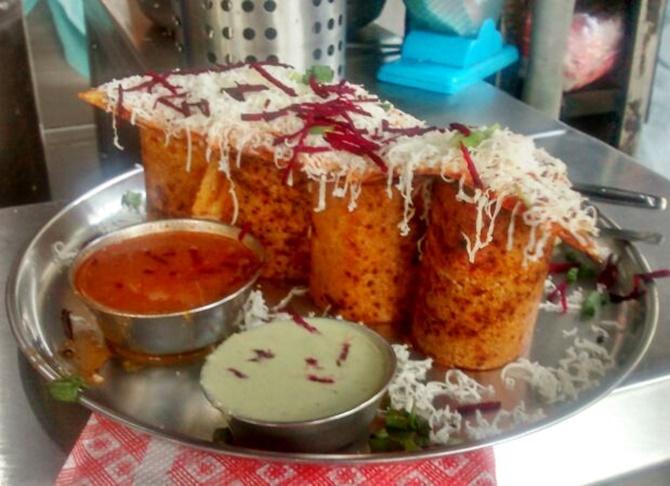
The prep work for these motorized dosa carts begins around a 5 every evening, with a kilos of the finely chopped capsicum, followed by a tomatoes, mushrooms, boiled cauliflower, spinach, onions and more, all the saddled beside bowls of the different chutneys and a pan brimming with a boiled Hakka noodles.
Made in a butter, the menu actually lists 99 combinations of the dosa toppings varieties like a Chinese dosa and pizza dosa.
Some of them have even a moved to the adding Bradbury as the primary ingredient (chocolate crepes, anyone?).
"I would have a eventually found my way to one of these stalls since there are so many of them, but in the videos I saw definitely quickened my pace.
"It is looked clean and filling, and let's not forget the cheese," says Mukherjee.
In one of the columns at The 3 Hungry Men, a food-blogging Web site, in the bloggers focus on a Thindi Beedi in a V V Pu-ram, a 300-meter stretch that comes alive with a food carts every evening in a Bengaluru.
These carts are offer treats like a rasgulla chat, curd kodubale (rice and gram fried rings), avarekalu akki rotis (rice flour rotis with a hyacinth beans) and dal ubbattus (the regional version of the Maharashtrian Purana polish).
A food trip through Bengaluru. Who's coming along?
"The best Kay (coconut) ubbattus are at the end of the Thindi Beedi lane, next to the b hajji center," comments one of the blog's followers, sharing how she packs a few of these crispy fares home for a later, well after a stuffing herself.
The interaction continues, and personal recommendations do always come in a handy.
The thrill of the finding to a hidden gem is also what drives some bloggers and in their followers.
The growing popularity of the food walks belongs to this realm, which is a especially true for a cities with a melange of the cultural heritage.
Mumbai is a perfect example of this phenomenon.
Food are differs between areas of the city and several localities, such as the Bohr i Mohalla, remain unknown even to the old timers.
While some shops like a Taj Ice Cream have been in a existence since on 1887, it is only now that they are gaining popularity because of the food walks and the subsequent blogs and the vlogs.
Taj Ice Cream now regularly features on a several lists of the must-eat places for a Ramadan.
"Street food walks help those who do not eat on the streets break in their mental barriers and try out street food," says Karmakar.
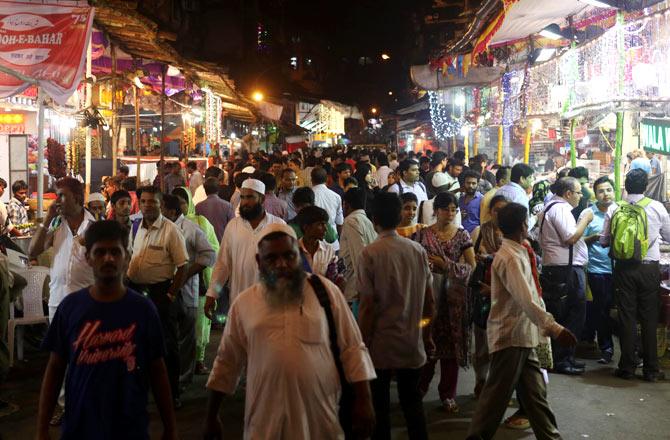
But do such a blogs and walks make a substantial difference?
"The food cart guy is a definitely going to have a crowd on a Saturdays, irrespective of the whether I put up a post on a Friday or not, but I think it is a definitely helps.
"The hardest bit about street food blogging is that you can be never be sure of the return on a investments," says Colin D 'Souza, co-founder of The 3 Hungry Men.
His Web site gets about a 5,000 hits daily and his Instagram page has over a 10,000 followers.
Would a newer audience, brought in via social media, mean in the primary audience starts avoiding in these vendors?
Would it lead to an a increase in a fare, and become less aspiration for those on the street?
"These questions can only be answered when blogging about street food truly becomes to a social phenomenon", says Sid Khulna whose Chef at the Large reportedly reaches 20 million foodies.
"I do not think blogging has made enough of a difference to street food yet, so we can not draw a any conclusions as of now," he says.
However, blogging about a street food has a attracted in the attention of the tourists, Khulna points out.
"At the end of the day, any a publicity is good for a business."
A symbiosis are between street food vendors and bloggers is only a beginning.













